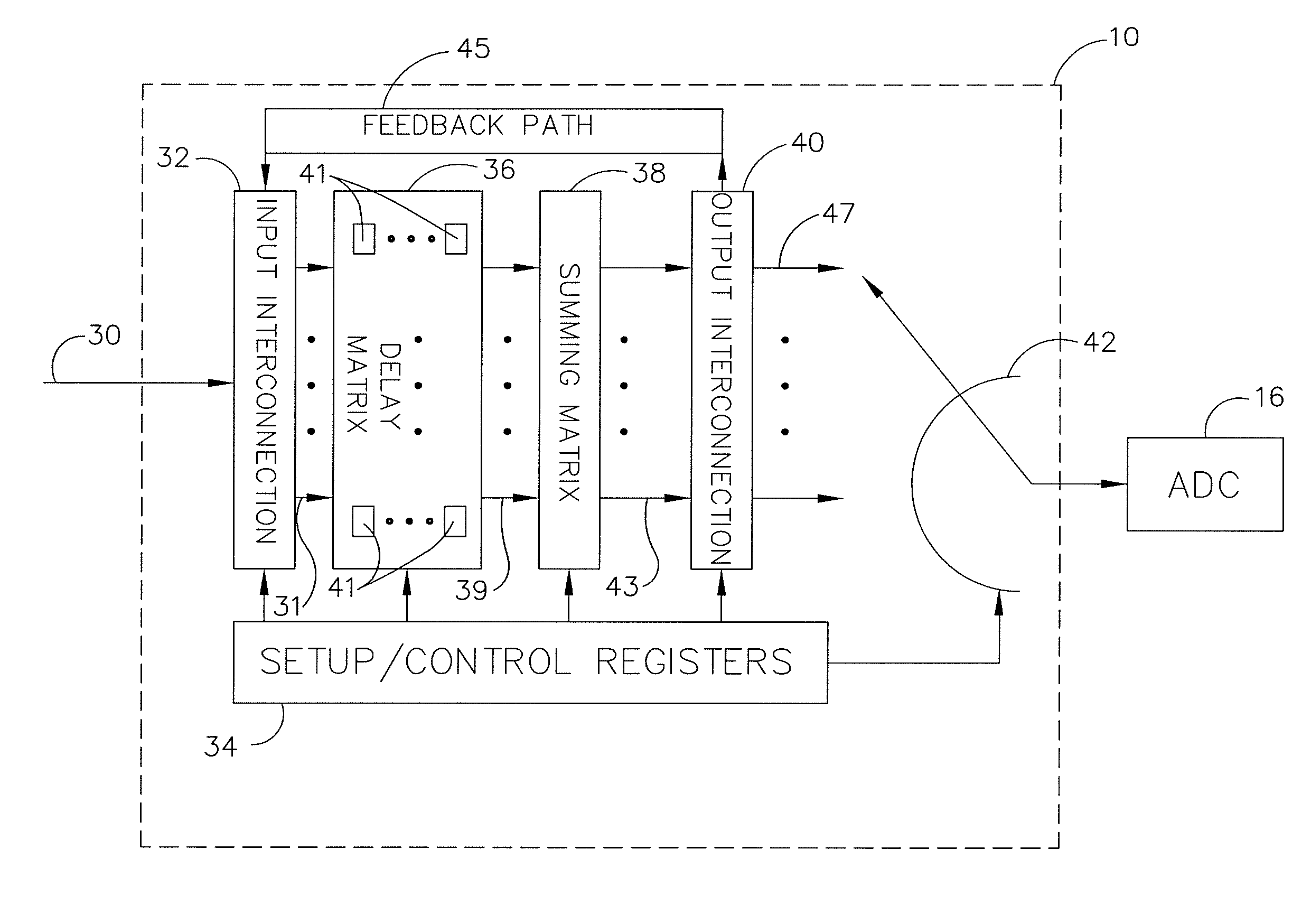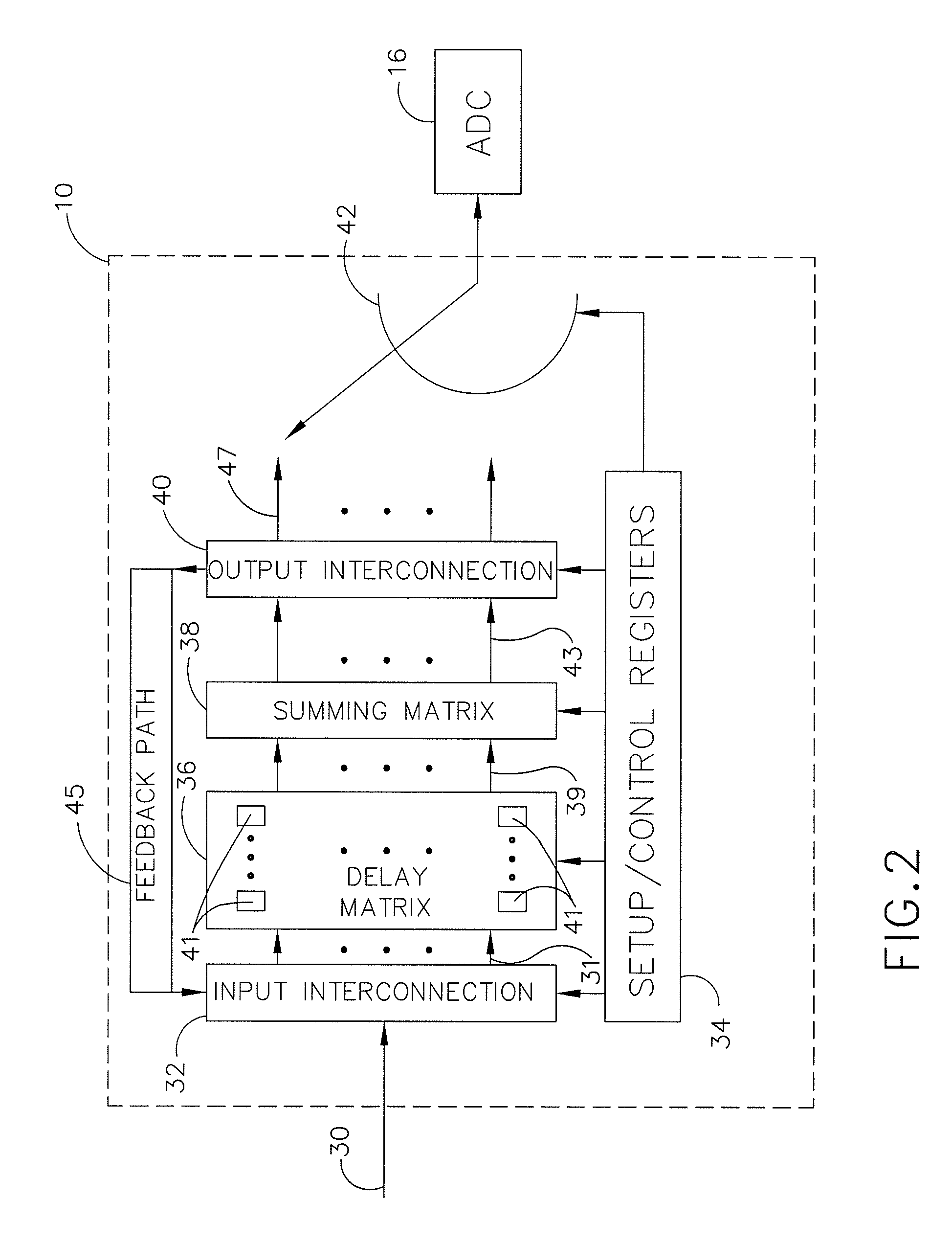Analog to feature converter for sigint applications
a technology of feature converter and analog processing block, which is applied in the direction of diversity/multi-antenna system, transmission monitoring, polarisation/directional diversity, etc., can solve the problems of limiting adc performance, aperture jitter and comparator ambiguity, and sigint methods that require very high-speed adcs and extensive processing resources
- Summary
- Abstract
- Description
- Claims
- Application Information
AI Technical Summary
Benefits of technology
Problems solved by technology
Method used
Image
Examples
Embodiment Construction
[0037] Referring toFIG. 1, the present invention includes a specially constructed analog processing block, or structured analog delay-sum (SAD) matrix 10. In a SIGINT system 12, the SAD matrix 10 is connected between an Automatic Gain Control circuit (AGC) 14 and a traditional ADC 16. The RF front-end includes an antenna 18 for receiving a wide band RF signal; a filter 20 for filtering the incoming signal from the antenna; a low noise amplifier circuit (LNA) 22 for amplifying the output of the filter 20, and the AGC 14. The RF signal is forwarded from the AGC 14 to be processed by the SAD matrix 10, as described below in greater detail, and the processed RF signal is converted by the ADC 16. The output of the ADC 16 is connected to a SIGINT backend processor 24. The SIGINT backend processor 24 may be any backend processor that is well known to those skilled in the art for use in SIGINT applications.
[0038] The SAD matrix 10 consists of a structured matrix of controllable analog dela...
PUM
 Login to View More
Login to View More Abstract
Description
Claims
Application Information
 Login to View More
Login to View More - R&D
- Intellectual Property
- Life Sciences
- Materials
- Tech Scout
- Unparalleled Data Quality
- Higher Quality Content
- 60% Fewer Hallucinations
Browse by: Latest US Patents, China's latest patents, Technical Efficacy Thesaurus, Application Domain, Technology Topic, Popular Technical Reports.
© 2025 PatSnap. All rights reserved.Legal|Privacy policy|Modern Slavery Act Transparency Statement|Sitemap|About US| Contact US: help@patsnap.com



